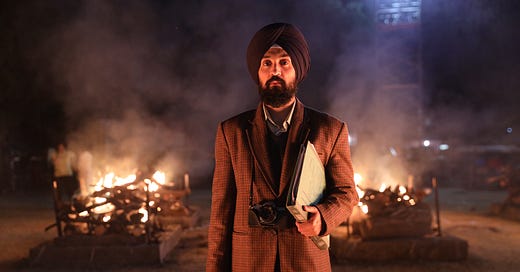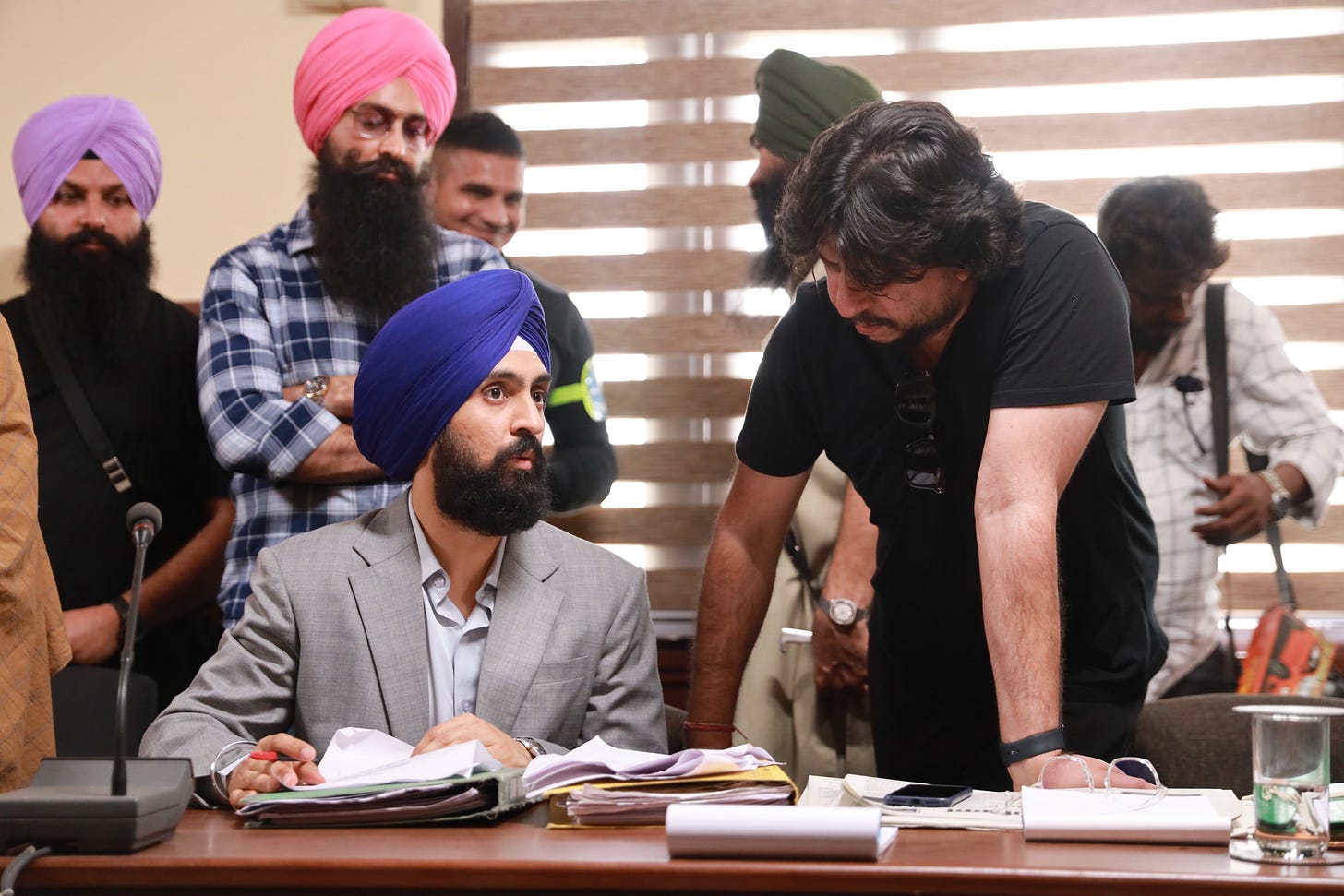The Man Who Lit A Dark World
Jaswant Singh Khalra showed us how even a single light could challenge the darkness. That’s why he’s so scary to the establishment. And that’s why they’re censoring his story.
I wrote this piece for Article 14’s subscribers after attending a private screening of an amazing film that the censors are screwing with big time. If only some of us cared a fraction of the amount Jaswant Singh Khalra, the protagonist of Panjab ’95, did the world would be a lighter, brighter place.
If you don’t tell his story, people will never know. If you don’t name his world and don’t highlight the pain his people faced, it ceases to exist. This seems to be one of the principles the Censor Board, or the CBFC, is using to censor Honey Trehan’s Panjab ’95, which has been in the news for the 127 or so cuts demanded.
The film was withdrawn from film festivals in Toronto, London and Mumbai due to political pressure exerted on the makers at a meeting in New Delhi; they were even ‘cajoled’ to take back a case they had filed in the Bombay High Court and agree to an “out of court settlement” on 21 cuts.
In subsequent meetings, the cuts kept rising. “Perhaps the idea is to keep cutting the film bit by bit till you completely edit the history,” Trehan tells me.
Panjab ’95 uses facts, documents, speeches and court verdicts to tell the story of a bloody decade in the state’s history through the story of Jaswant Singh Khalra, a human rights activist whom Punjab venerates so much that his portrait hangs in the Golden Temple complex. Khalra is a man that the rest of India deserves to know more about.
Why is Khalra’s story so scary to those blocking the film? Because his life illustrates clearly what it takes to spread light in the midst of darkness. Hint: Not by tweeting.
In the film, Diljit Dosanjh, who plays Khalra (Dosanjh agreed to do the film immediately and for free), narrates a story about a light that inspires other lights when it decides to “challenge the darkness.”
“Separately we can’t defeat the darkness but together we can definitely defeat it,” Dosanj says. In fact, the animation used to illustrate the name of Trehan’s company at the start of the film is inspired by a popular film my generation grew up seeing on Doordarshan, about the tiny fish that got together to take on the big fish.
Watch a version of it here:Bachpan Ki Yaadein
Panjab ’95 film is also a takedown of “supercop” K P S Gill, depicted in the film as Director General of Police I P S Bitta. Back then Gill used the National Security Act and the precursor of the UAPA, the Terrorist and Disruptive Activities (Prevention) Act,1987 or TADA as it was known, to ‘manage’ the fallout of the state excesses of 1984.
Gill was later appointed by Narendra Modi, then the chief minister of Gujarat, as a security consultant after the Gujarat Riots. In Modi’s India, Gill and not Khalra is the hero. Just as Godse and not Gandhi is the one to venerate.
But did I say Punjab? Shhhh. Delete Punjab. Delete Patti, Tarn Taran, Amritsar, Durgiana, all real towns in Punjab where in the decade after 1984, bodies of young men, mostly under the age of 30, began disappearing as the Punjab Police murdered thousands of “terrorists” in extrajudicial encounters. The bodies then showed up at morgues, crematoria and rivers, always marked “unclaimed”.
Censors responded similarly to Anurag Kashyap’s film Udta Punjab about the chokehold of drugs on the state’s youth, asking the filmmaker to delete all references to real cities. They asked for 98 cuts, though the film eventually released with one cut. But eight years later, the censorship noose around Indian filmmakers is tighter than ever. “Industry will have to get together or the censors will keep ghosting filmmakers and make arbitrary cuts,” Kashyap tells me.
Trehan’s film then is a message for India and for the film industry too. If only the small fish could get together they would be able to stand up to the big fish. Trehan has lit a lamp by directing this story about a member of a minority community taking on the country’s most powerful politicians. Who will step up to support him?
Delete Delhi, London and Canada. Delete flags of other countries and the names of international Sikh organisations that supported Khalra. Remove the tricolour, because the film is “Punjab centric”. No gurbani in the soundtrack of the film, please. Delete all facts and credits given to Khalra and his family, who finally parted with the rights of this coveted story to Trehan because they believed he would do it justice and because he grew up near Tarn Taran. Strip this story of all its reality so that nobody can see the parallels it has to today’s India.
Like the Association of Disappeared People in Punjab and how it is mirrored in Kashmir. Or the way the government of that day labels Khalra and those who support him as “puppets of videshi (foreign) forces” and emphasises that what happens in India should stay in India. Then there’s the chief minister who says “people slip and fall in canals, there is no conspiracy.” And the prosecutors who insist that the defense is conjuring a “conspiracy to defame the police”.
In a nation that shuts down dissent against the state, speaking up is a dangerous idea certainly not one to be celebrated on the big screen. Khalra’s fight is for something as basic as a right to a death certificate (many Indians continue to fight this fight) and his fiery wife Pammi or Parminder reminds the viewer of Yulia Navalnaya, the widow of Russian dissenter Alexei Navalny. and all other family members who have taken on the mantle of their persecuted loved ones.
So what if an entire film about the Emergency released around the same time as the trailer of Punjab ’95 was released? Remove any mention of Indira Gandhi in this film. “She was never assassinated. She never existed,” says Trehan in Bengaluru, listing some of the cuts after a private screening.
Don’t mention Punjab Police. Yes they were the key perpetrators of this mass crime and some of them continue to be jailed for these crimes even today. “So there are cops with turbans but I can’t say Punjab,” Trehan says. “I don’t know which other state this could possibly be.”
Adds Trehan: “I’m thinking…what is left in the movie?”






Where can one watch this
State terrorism employed against the Sikhs is in my view is the single most downplayed instances , no one except a small Population of Indians, Remember this .